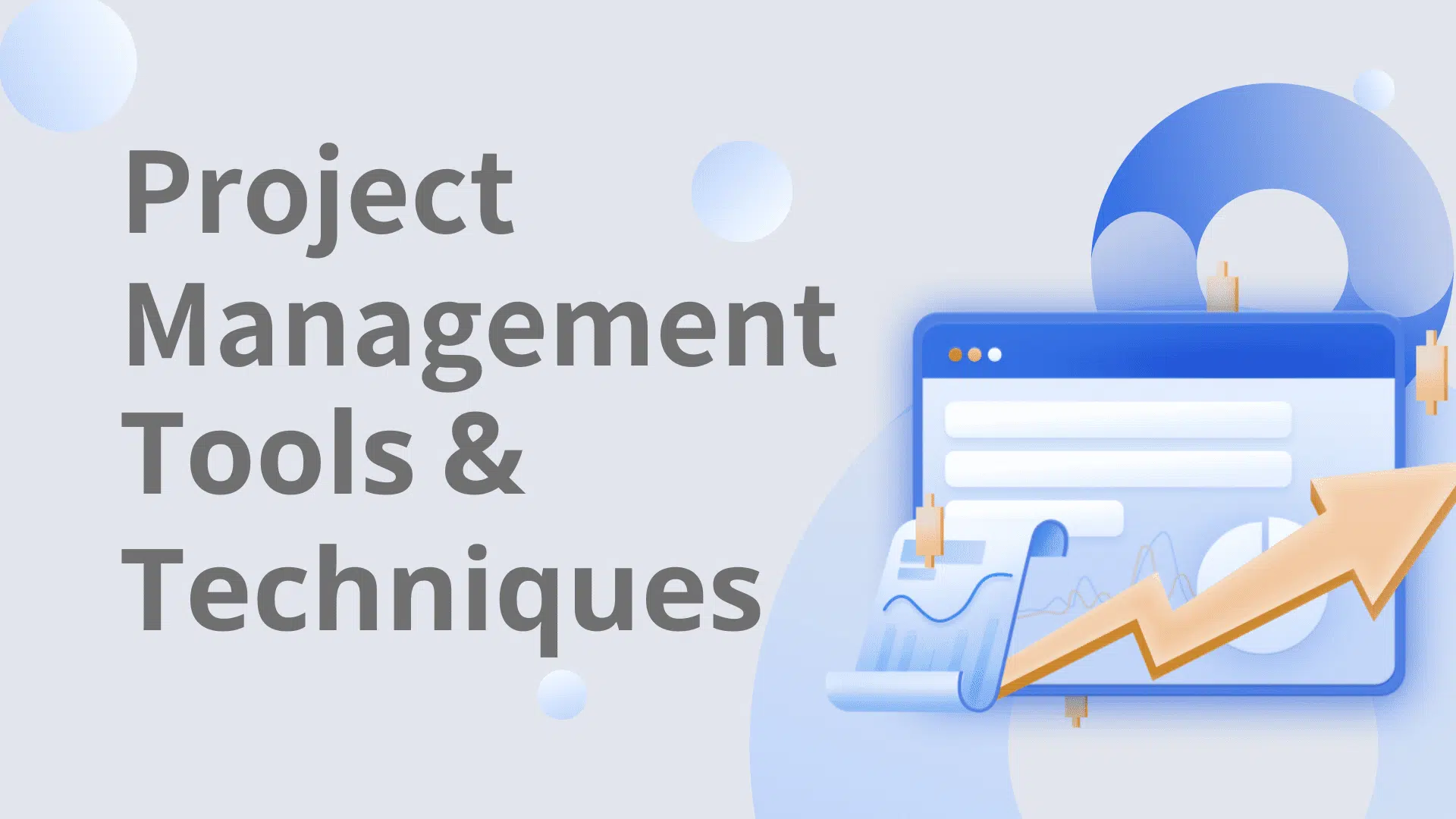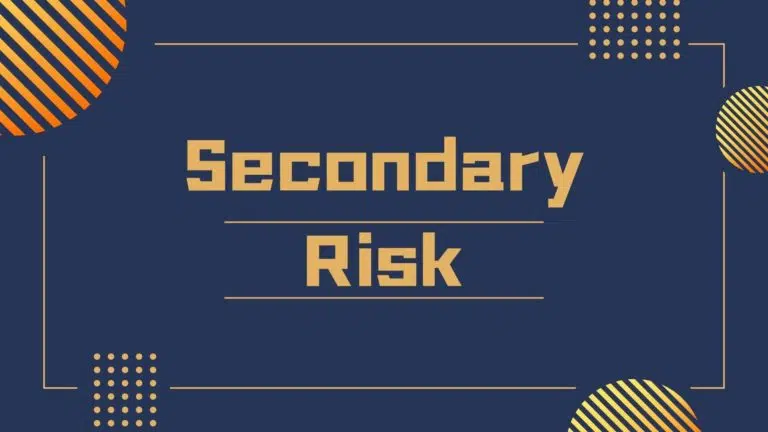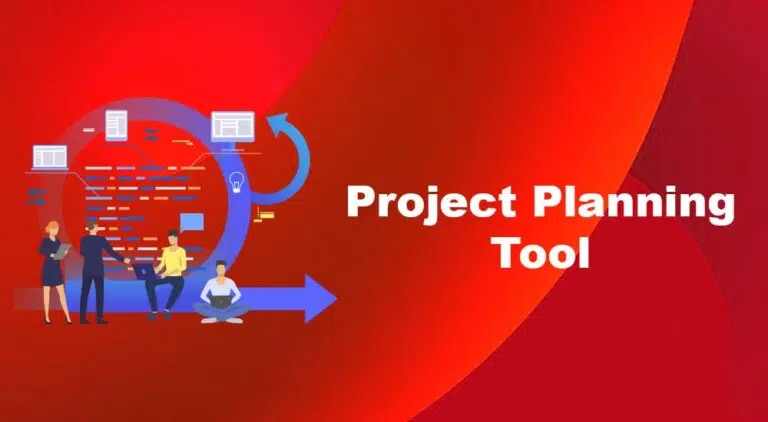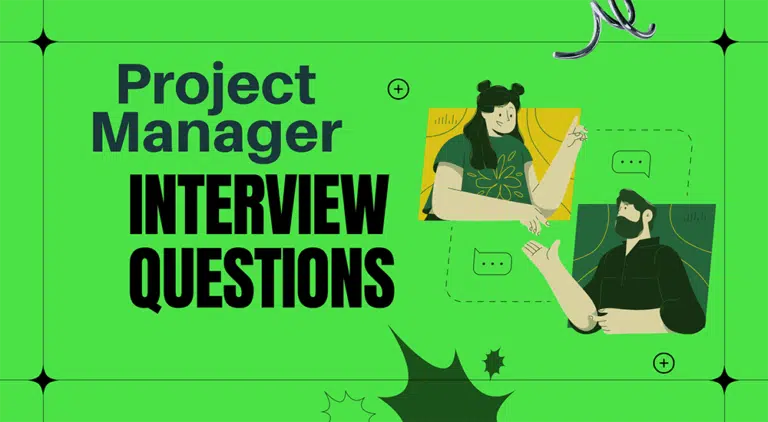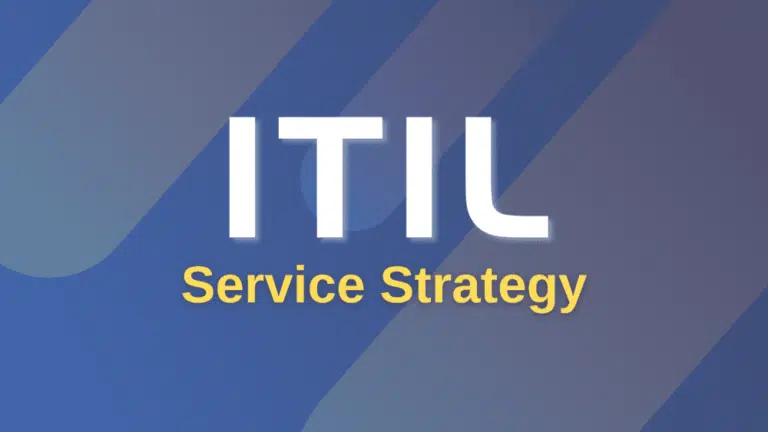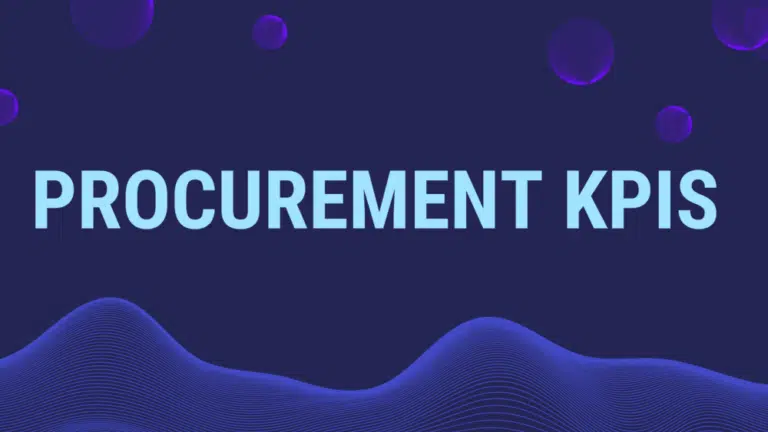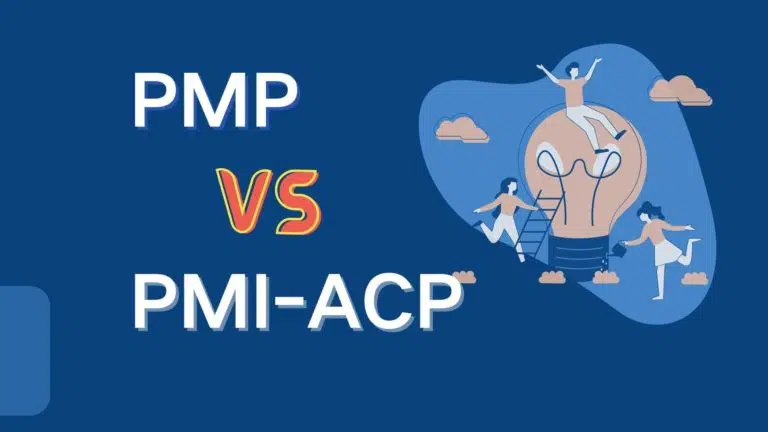Project management tools and techniques help manage the project effectively. These tools help you develop project management plans, execute them, monitor and control the project and complete it successfully.
You can use these project management tools and techniques for any project, irrespective of industry or field.
This blog post will provide you with the 23 best project management tools and techniques to manage your project.
Let’s get started.
Project Management Tools and Techniques
- Gantt Charts
- Work Breakdown Structure (WBS)
- Critical Path Method (CPM)
- Kanban Boards
- Earned Value Management (EVM)
- Decision Matrix Analysis
- Expected Monetary Value
- SWOT Analysis
- Monte Carlo Analysis
- Variance Analysis
- Scenario Analysis
- Resource Leveling
- Pareto Charts
- Control Charts
- Cost Benefit Analysis
- RACI Matrix
- Burn-Down Charts
- Tornado Diagram
- Facilitated Workshop
- Stakeholder Salience
- Scatter Diagram
- Cause and Effect Diagram
- Five-Why Analysis
#1. Gantt Charts
This chart was developed by Henry Gantt, an American engineer and management consultant, in the early 20th century. A Gantt Chart is a visual project management tool. It helps you plan, schedule, and track the progress of your project and tasks.
A Gantt chart represents tasks or activities as horizontal bars on a timeline. The timeline covers the project duration. The tasks on shown in separate bars, and the bar’s length is the duration of the task. The chart shows the tasks’ dependencies so you will know the sequence of activities.
As the project progresses, you can update the Gantt chart by coloring the bars to show the progress. This helps you visualize the status of tasks and identify delays or bottlenecks.
A Gantt Chart is the most popular tool in project management to manage schedules and monitor the project’s progress.
Project managers (PM) and scrum masters use it worldwide to measure their project’s progress.
Pros of Gantt Chart:
- Visual representation of project tasks and timelines
- Effective task scheduling and coordination
- Resource allocation and management
- Progress tracking and monitoring
- Improved communication and collaboration
Cons of Gantt Chart:
- Complex for large projects
- Less flexible in handling changes
- Time-consuming updates
- Limited task details
- Challenges in managing dependencies
Gantt charts let you plan and manage projects organizationally, ensuring tasks are completed on time and in the correct sequence. It helps you stay on track and collaborate throughout the project lifecycle.
#2. Work Breakdown Structure (WBS)
The Work Breakdown Structure (WBS) is a hierarchical tool used in project management to break the project into smaller, more manageable components. It helps to understand the scope of work.
This hierarchical structure shows the project’s components and their relationships.
The WBS helps organize and manage the work effectively. It allows efficient resource allocation, assigns responsibilities, and tracks progress at each level.
Pros of Work Breakdown Structure:
- Shows project deliverables visually
- Facilitates effective project planning, scheduling, and resource allocation
- Helps identify and manage project risks and dependencies
- Promotes better communication and coordination among project stakeholders
- Enhances project monitoring and control
Cons of Work Breakdown Structure:
- Requires effort and time to develop and maintain
- Challenging to create a comprehensive breakdown for complex projects
- Changes or updates to the WBS may require extensive revisions
Work Breakdown Structure provides a basis for estimating costs, setting project timelines, and identifying dependencies between tasks. It is a fundamental project management tool used in all industries to ensure successful project execution.
#3. Critical Path Method (CPM)
The Critical Path Method (CPM) was developed in the late 1950s by James E. Kelley Jr. and Morgan R. Walker of the DuPont Company.
The CPM is a network diagramming technique that helps you develop and manage your project schedule baseline. It shows the critical tasks and the shortest duration to complete the project.
The CPM analyzes the activity sequence and identifies critical tasks that affect the project duration. Ensure that you complete these critical tasks on time to avoid project delays.
A critical path helps you focus resources and ensure timely completion.
Pros of the Critical Path Method:
- Identifies critical tasks and provides the shortest project duration
- Helps sequence and schedule project activities efficiently
- Provides task dependencies, as well as their impact on project timelines
- Facilitates resource allocation and leveling
- Enables project monitoring and control by identifying delays and critical milestones
Cons of the Critical Path Method:
- Requires accurate task duration estimates for reliable results
- Difficult to analyze and manage the critical path for complex projects
- Limited flexibility with changes and uncertainties once the project has started
- Reliance on accurate, updated project data to determine the critical path
- Time-consuming and may require specialized software for complex projects
The Critical Path Method is a robust project management tool to analyze and optimize project schedules. By focusing on the critical tasks, you can effectively manage resources, identify potential bottlenecks, and make informed decisions to keep the project on track.
PERT (Program Evaluation of Review Technique) and CCM (Critical Chain Method) are two other network diagramming techniques used in project management.
PERT used three time estimates: optimistic time, pessimistic time, and most likely time to calculate the average time.
While the critical chain method uses buffers (e.g., project buffer and activity buffer), critical chain project management (or CCPM) takes the critical path method (CPM) one step further. The CPM does not consider resource constraints while developing the schedule, whereas the CCM considers these constraints and develops a better, more robust schedule.
These networking techniques are more useful in waterfall or traditional project management.
Waterfall methodologies are useful for projects that require very few iterations throughout the project life cycle.
#4. Kanban Boards
The Kanban method was developed in the 1940s by Taiichi Ohno, an industrial engineer at Toyota.
The Kanban board is a visual tool for managing and tracking tasks. It provides a simple and visual representation of the work progress, allowing project teams to visualize their work and improve efficiency.
A Kanban board consists of columns representing different stages of the work process. A card or sticky note represents each task, moving across the columns as it progresses from one stage to another. The board helps teams see each task’s status, identify bottlenecks, and maintain a smooth workflow.
The Kanban board provides a clear visual representation of the project’s workflow. It helps team members see which tasks are in progress, pending and completed. This visibility lets you prioritize work, collaborate effectively, and identify obstacles or bottlenecks.
Pros of Kanban Boards:
- Workflow visualization makes it easy to understand and track task progress
- Enhances transparency and collaboration among team members
- Identifies bottlenecks and enables continuous process improvement
- Prioritizes work and manages task assignments effectively
- Supports lean principles, improves efficiency, and reduces waste
Cons of Kanban Boards:
- Relies on manual updates
- Requires discipline for effective implementation and utilization
- Not suitable for complex projects or large teams with numerous tasks
- Requires discipline and adherence to the Kanban principles to ensure its effectiveness
- Provides limited information about task dependencies and complex relationships
The Kanban board’s simplicity and flexibility make it suitable for project management and projects. It promotes transparency, encourages continuous improvement, and facilitates efficient task management.
Kanban board is mostly used in Agile software development projects.
#5. Earned Value Management (EVM)
The U.S. Department of Defense developed the EVM framework in the 1960s.
Earned Value Management (EVM) is a cost management technique to measure and track the performance of a project in terms of cost, schedule, and scope.
EVM compares the planned work with the actual cost and earned value at any given time.
It uses three key metrics to evaluate project performance:
- Planned Value (PV): This is the authorized budget for the planned work. It shows how much work should have been completed at a given time.
- Earned Value (EV): This is the value of work completed. It shows the progress made in terms of the budgeted work.
- Actual Cost (AC): This is the actual cost incurred to date.
These metrics provide insights into project performance, and you can make informed decisions. You can derive the following key indicators from these metrics:
- Schedule Variance (SV): SV = EV – PV. It measures the schedule deviation. A positive SV shows the project is ahead of schedule, and a negative SV indicates it is behind schedule.
- Cost Variance (CV): CV = EV – AC. It measures the cost deviation. A positive CV shows cost savings, while a negative CV indicates costs over budget.
- Cost Performance Index (CPI): CPI = EV / AC. It measures the cost efficiency of the project. A CPI >1 indicates good cost performance, while a CPI <1 indicates costs over budget.
- Schedule Performance Index (SPI): CPI = EV / PV. It measures the schedule efficiency of the project. An SPI >1 indicates the project is ahead of schedule, while an SPI <1 indicates the project is behind schedule.
Earned Value Management provides an overview of the project performance, so you can see deviations, make adjustments, and take corrective or preventive actions.
Pros of Earned Value Management:
- Provides objective measurement of project performance
- Allows for early identification of project deviations or issues
- Enables effective cost and schedule control
- Facilitates accurate forecasting and budgeting
- Enhances project communication and reporting
- Assesses project health
- Facilitates benchmarking and performance comparisons
- Supports decision-making based on data and metrics
- Increases stakeholder confidence in project outcomes
Cons of Earned Value Management:
- Requires thorough understanding and expertise to implement effectively
- Setup and maintenance is time-consuming and resource-intensive
- Relies on accurate and timely data collection, which can be challenging
- Creates an additional administrative burden for project teams
- Less suitable for agile or iterative project management approaches
- Implementation difficulties may arise when integrating with other project management software
#6. Decision Matrix Analysis
The Decision Matrix Analysis evaluates and compares choices based on multiple criteria. It helps make informed decisions by providing a structured framework to assess the relative importance of criteria and the performance of each option.
In a Decision Matrix, the rows represent the options or alternatives, and the columns represent the criteria. Each criterion is assigned a weight or importance factor to reflect its relative significance in decision-making.
Then, each option is evaluated and scored against each criterion. Finally, the scores are multiplied by the respective weights and summed up to determine the overall performance of each option.
The Decision Matrix Analysis allows you to compare and rank different options based on the criteria objectively. You can select the best option by considering the weights and scores.
The Decision Matrix Analysis is valuable in decision-making scenarios, such as evaluating potential suppliers, selecting projects, or comparing job candidates. It provides a structured approach to assess and prioritize options, leading to more confident and rational decisions.
Pros of Decision Matrix Analysis:
- Provides a structured approach to evaluate and compare multiple options
- Enables objective decision-making based on criteria and weighted factors
- Facilitates identification of the most suitable alternative option
- Enhances transparency and justifies decisions to stakeholders
- Allows visualization of the decision-making process and rationale
Cons of Decision Matrix Analysis:
- Relies on the accuracy, completeness, and weighting of criteria
- Oversimplifies complex decisions by reducing them to numerical values
- Subjectively assigns weights and scoring criteria, which can introduce biases
- Requires time and effort to gather relevant information and analyze options
- Does not account for intangible or qualitative factors that are difficult to quantify
#7. Expected Monetary Value
Expected Monetary Value (EMV) is a decision-making technique to quantify the value of the outcome of different alternatives or risks. It helps assess the expected financial impact of various scenarios by considering the probabilities of their occurrence and their monetary values.
The EMV calculates the expected value of each alternative by multiplying the monetary value of each outcome by its probability of occurrence.
The Expected Monetary Value allows decision-makers to assess and compare different alternatives regarding their financial outcomes. By considering probabilities and monetary values, you can make more informed decisions and select the choice with the highest expected value.
The EMV technique is widely used in risk management and decision-making processes. It provides a quantitative approach to evaluate and prioritize alternatives, enabling stakeholders to understand the financial implications of their choices.
Pros of Expected Monetary Value:
- Incorporates probability and impact to assess the value of different decisions
- Provides a quantitative measurement to compare and prioritize alternatives objectively
- Enables risk assessment by considering the likelihood and possible outcomes of different scenarios
- Facilitates decision-making by considering the monetary gains or losses of each option
- Supports cost-benefit analysis and aids in resource allocation and investment decisions
Cons of Expected Monetary Value:
- Relies on accurate and reliable data for probabilities and monetary values, which can be challenging
- Oversimplifies complex decisions by focusing solely on monetary outcomes and disregarding other important factors
- Makes assumptions when estimating probabilities and impacts, which can introduce subjectivity and bias
- Does not consider non-monetary or qualitative factors that may be relevant to the decision
- Does not consider changing circumstances or dynamic environments, thus limiting its applicability in certain situations
#8. SWOT Analysis
Albert S. Humphrey developed the SWOT analysis in the 1960s at the Stanford Research Institute.
SWOT analysis is a planning technique to assess a project’s strengths, weaknesses, opportunities, and threats. It finds internal and external factors that can impact the project’s success.
SWOT analysis evaluates the following factors:
- Strengths: These are the positive attributes and internal resources that provide an advantage over competitors and/or contribute to the project’s success. They can include unique skills, strong customer relationships, efficient processes, etc.
- Weaknesses: These are the internal limitations or challenges that hinder progress and/or put the project at a disadvantage. Weaknesses can include a lack of expertise, outdated technology, poor customer service, etc.
- Opportunities: These are external factors or situations that can benefit the project. Opportunities can arise from emerging markets, changing customer needs, technological advancements, etc.
- Threats: These external factors can negatively impact the project or business. Threats can include competition, economic downturns, or legal and regulatory changes.
SWOT analysis helps individuals make decisions, identify improvement areas, and realize opportunities. By understanding strengths, weaknesses, opportunities, and threats, you can develop effective strategies to achieve your goals.
Pros of SWOT Analysis:
- Provides a structured framework to assess an organization’s internal strengths and weaknesses, as well as its external opportunities and threats
- Identifies strategic priorities and improvement areas
- Facilitates effective decision-making by considering internal and external factors
- Enhances organizational awareness and understanding of the business environment
- Supports the development of action plans and strategies based on the identified insights
Cons of SWOT Analysis:
- Subject to biases and assumptions that can influence SWOT interpretation
- Relies on data accuracy and quality
- Oversimplifies complex situations by broadly categorizing factors
- Prone to subjectivity, as different individuals or teams may have varying interpretations of the same factors
- Does not capture emerging or unforeseen factors that impact the organization.
#9. Monte Carlo Analysis
The Monte Carlo analysis was developed in the 1940s by scientists working on the atomic bomb project at Los Alamos National Laboratory, including Stanislaw Ulam and Nicholas Metropolis.
Monte Carlo analysis is a quantitative risk analysis tool that models and simulates different possible outcomes in a given scenario. It helps understand the variability and uncertainty associated with different factors and provides a probabilistic assessment of the results.
Monte Carlo analysis involves running multiple simulations based on a random sampling of input variables within specified ranges. Each simulation represents a possible outcome or scenario, and by running many simulations, you can estimate the range and probability distribution of the results.
Pros of Monte Carlo Analysis:
- Provides a probable assessment of outcomes
- Captures variability and uncertainty in complex systems
- Allows for a range of inputs and calculates their impact on results
- Assesses risks and makes decisions in uncertain situations
Cons of Monte Carlo Analysis:
- Requires a large number of simulations for accurate results
- Computation-intensive and time-consuming
- Relies on accurate input data and assumptions
- Results are based on probabilities, not predetermined outcomes
Monte Carlo analysis is widely used in finance, engineering, project management, and risk analysis. It helps in quantifying uncertainty and making informed decisions based on possible outcomes.
#10. Variance Analysis
Variance analysis compares and analyzes the difference between planned or expected and actual outcomes. It helps evaluate the performance and identify discrepancies or variations in costs, schedules, or project outcomes.
Variance analysis helps understand the reasons behind the deviations and take appropriate actions.
Pros of Variance Analysis:
- Provides a quantitative measurement of performance deviations
- Identifies improvement areas or possible risks
- Enables timely corrective actions
- Supports effective budget management and cost control
Cons of Variance Analysis:
- Relies on accurate and reliable data for meaningful analysis
- Does not capture qualitative factors or underlying causes
- Limited to analyzing deviations and does not provide in-depth insights
- Requires clear benchmarks or standards for comparison
Variance analysis is a widely used project management technique for performance evaluation. It helps understand the differences between planned and actual outcomes and assists in making informed decisions to improve performance.
#11. Scenario Analysis
Scenario analysis is a popular project management technique to explore and evaluate the potential outcomes of different scenarios or situations. It helps understand the impact of various factors or events on a project.
Scenario analysis allows decision-makers to consider multiple possible futures and make more informed choices.
Scenario analysis involves creating and examining different hypothetical scenarios or situations. Each scenario represents a possible set of events that could occur. By analyzing these scenarios, you can assess the outcomes associated with each situation.
Pros of Scenario Analysis:
- Provides a structured approach to consider multiple future possibilities
- Identifies potential risks and opportunities
- Enables proactive decision-making and contingency planning
- Improves understanding of potential outcomes in different conditions
Cons of Scenario Analysis:
- Relies on assumptions and does not capture all possible scenarios
- Time-consuming and resource-intensive
- Results are based on hypothetical situations and do not accurately reflect reality
- Subjective scenario interpretation and weighting
Scenario analysis is used in strategic planning, risk management, and decision-making processes. It helps decision-makers explore alternative futures, assess the impact of uncertainties, and make more robust and adaptable decisions.
#12. Resource Leveling
Resource leveling is a technique used in project management to balance and optimize the allocation of resources. It helps avoid resource overloads or shortages and ensures a more efficient and manageable project schedule.
Resource leveling involves adjusting the project schedule to distribute resources to minimize peaks in resource demand. It helps maintain consistent resource utilization throughout the project, considering their availability and capacity constraints.
Leveling resources lets you avoid resource overloads or shortages, creating a more balanced and sustainable schedule for the project.
Pros of Resource Leveling:
- Optimizes resource utilization and avoids overloads or shortages
- Provides a more balanced and manageable project schedule
- Identifies resource constraints and resolves conflicts
- Enhances project efficiency and productivity
Cons of Resource Leveling:
- Requires adjustments to task durations, which can affect the overall project timeline
- Introduces additional complexities and dependencies into the project schedule
- Requires accurate resource availability and capacity information for effective leveling
- Results in trade-offs and compromises between resource allocation and project objectives
Resource leveling is a valuable project management technique, particularly when resources are limited or when optimizing resource utilization is crucial. Balancing resource demands ensures a smoother workflow and helps achieve an efficient and sustainable project schedule.
#13. Pareto Charts
The Pareto chart was developed by Vilfredo Pareto, an Italian economist, and sociologist, in the late 19th century.
The Pareto chart, or the Pareto diagram, is a visual tool to analyze and prioritize the most significant factors contributing to a problem or outcome. It helps identify the vital factors that have the greatest impact, allowing for focused efforts and problem-solving.
This chart represents data in a bar graph format, with the bars arranged in descending order of frequency or importance. The chart combines the frequency or occurrence of different factors and their cumulative impact.
Pros of Pareto Charts:
- Provides a visual representation of the most significant factors and/or issues
- Identifies vital factors that mainly contribute to the problem
- Enables focused problem-solving and resource allocation
- Enhances communication and understanding of data analysis
Cons of Pareto Charts:
- Relies on accurate data collection and factor classification
- Does not provide insight into the root causes of issues
- Overlooks rare critical factors
- Requires subjective judgment to determine the appropriate inclusion threshold
The Pareto chart is widely used in quality management, process improvement, and decision-making. It helps prioritize efforts and resources by focusing on the most impactful factors.
#14. Control Charts
Control charts were developed by Walter A. Shewhart, an American engineer, and statistician, in the 1920s.
A control chart is a statistical tool that monitors and analyzes process variations over time. It helps determine whether a process is stable and within control limits.
A control chart consists of a graph with time on the horizontal axis and a measurement of the process on the vertical axis. The chart includes a center line representing the process average or target value and upper and lower control limits. Data points are plotted on the chart, and their positions relative to the control limits help identify patterns or signals of process variation.
From the control chart, you can observe whether the data points fall within the control limits or if they exhibit any unusual patterns. If the data points stay within the control limits and show random variation, the process is in control.
However, if data points exceed the control limits or exhibit non-random patterns, the process is out of control and requires investigation and corrective and preventive action.
Pros of Control Charts:
- Provides a visual and statistical method of monitoring process variation
- Identifies whether a process is under or out of control
- Enables early detection of process deviations or abnormalities
- Facilitates data-driven decision-making and process improvement
Cons of Control Charts:
- Requires a sufficient amount of data for meaningful analysis
- Assumes the data follows a normal distribution and exhibits random variations
- Does not detect subtle shifts or trends
- Relies on accurate and consistent data measurement
Control charts are used in quality management, process improvement, and statistical process control. They provide a systematic approach to monitor process performance and ensure consistent quality.
#15. Cost Benefit Analysis
Cost-benefit analysis helps assess the financial viability of a project, investment, or decision. It helps compare the costs of implementing a particular action with its benefits or value.
The cost-benefit analysis identifies and quantifies the costs and benefits of a decision or project. The costs may include expenses such as investments, operating costs, and maintenance costs, while the benefits may encompass monetary gains, savings, improved efficiency, or other positive outcomes.
By comparing the costs and benefits, you can evaluate whether the benefits outweigh the costs and make informed choices.
Pros of Cost-Benefit Analysis:
- Provides a structured framework to evaluate the financial viability of decisions
- Compares alternatives and selects the most financially beneficial option
- Facilitates transparent decision-making by considering costs and benefits
- Enables stakeholders to understand and justify the financial impact of a decision
Cons of Cost-Benefit Analysis:
- Requires accurate estimation and quantification of costs and benefits, which can be challenging
- Does not capture intangible or non-monetary factors that are difficult to quantify
- Relies on assumptions and can be influenced by subjective judgment
- Ignores distributional effects, as well as cost and benefit distribution among different stakeholders
Cost-benefit analysis is used for project evaluation. It helps assess the financial attractiveness and rationale behind selecting a particular project.
#16. RACI Matrix
The RACI matrix is an effective project management tool to define and communicate the roles and responsibilities of team members. It helps clarify who is Responsible, Accountable, Consulted, and Informed for each task or decision.
The RACI matrix breaks activities into four key roles:
- Responsible (R): This involves the person or group who is responsible for performing the activity.
- Accountable (A): This involves the person who is held accountable for completing the activity. They have final authority and ownership over the outcome.
- Consulted (C): This involves the individuals or groups who are consulted for input or expertise during the task or decision-making process. They provide valuable insight and advice.
- Informed (I): This involves the individuals or groups who are kept informed on the progress or outcomes of the tasks or decisions. They are not directly involved, but they still need to be aware of the updates.
Pros of RACI Matrix:
- Defines roles and responsibilities for tasks or activities
- Avoids confusion and overlapping responsibilities
- Enhances task accountability and ownership
- Improves communication and collaboration among team members
Cons of RACI Matrix:
- Requires clear and accurate understanding of tasks and roles
- Does not capture all nuances of decision-making and collaboration
- Complex and time-consuming for large projects
- Relies on effective communication and adherence to assigned roles
The RACI matrix is a useful project management technique to improve processes and define organizational roles. It provides a simple visual representation of all project roles, enabling efficient team coordination and collaboration.
This tool is useful for all project management methodologies.
#17. Burndown Charts
The burndown chart is a visual Agile project management tool to track the progress of work completed against the planned work. It helps teams monitor progress and forecast whether they meet project goals or deadlines.
A burndown chart illustrates the remaining work (represented on the vertical axis) against time (represented on the horizontal axis). The chart starts with the total work or scope at the beginning of the project, and as the project progresses, the completed work is subtracted from the total.
The planned progress line is plotted to show the desired trajectory for completing the work.
Pros of Burndown Charts:
- Provides a visual representation of work progress over time
- Tracks team progress and identifies whether they are on track
- Enables early identification of potential barriers to achieving project goals
- Facilitates communication and transparency among the team and stakeholders
Cons of Burndown Charts:
- Always assumes a linear rate of progress
- Does not capture changes in scope or newly identified tasks during the project
- Requires accurate estimation and tracking of work completion
- Relies on consistent updates from team members
Burndown charts are widely used in Agile Project Management Methodology, particularly in Scrum. They visually represent work progress, allowing teams to adapt and make necessary adjustments to meet project goals and deadlines.
#18. Tornado Diagram
The Tornado diagram is a graphical tool to analyze the sensitivity of different factors on a particular outcome. It helps identify which factors have the most significant impact and which have the least.
A Tornado diagram consists of a horizontal bar chart with bars arranged in descending order. The length of each bar represents the magnitude or impact of a factor on the outcome being analyzed.
The factors are typically listed on the vertical axis, and the bars are divided into two sections: one above and one below a central axis line.
Pros of Tornado Diagrams:
- Provides a visual representation of the relative importance of different factors
- Identifies factors with the greatest impact on the outcome
- Enables prioritization of resources and efforts, based on identified influential factors
- Facilitates effective communication and understanding among stakeholders
Cons of Tornado Diagrams:
- Requires accurate and reliable data to determine the impact of each factor
- Oversimplifies complex relationships among factors and outcomes
- Relies on subjective judgment and assumptions to assign impact values
- Does not provide information on the direction or strength of relationships between factors
The Tornado diagram is commonly used in risk analysis, decision-making, and sensitivity analysis. It helps you focus on the most critical factors and make informed decisions based on the identified influences.
#19. Facilitated Workshop
A facilitated workshop is a collaborative session to engage experts in generating ideas, solving problems, making decisions, or planning activities.
It is facilitated by a neutral facilitator who guides the process and ensures active participation from all participants.
A facilitated workshop brings together diverse individuals with different perspectives and expertise to work together toward a common goal. The facilitator creates a structured environment that encourages open communication, creative thinking, and collective problem-solving.
Pros of Facilitated Workshops:
- Promotes collaboration and engagement among participants
- Allows sharing and leveraging of diverse perspectives and expertise
- Provides a structured environment to generate ideas and make decisions
- Ensures an inclusive and productive process
- Leads to faster problem-solving and decision-making
Cons of Facilitated Workshops:
- Requires skilled facilitators to manage the process effectively
- Relies on active participation and contribution from all participants
- Time-consuming for complex topics or larger groups
- Allows specific individuals to dominate the discussion, thus leading to less diverse outcomes
Facilitated is a useful project management technique to get input from a group, foster collaboration, and achieve consensus on important matters.
#20. Stakeholder Salience Model
Mitchell, Agle, and Wood developed the Stakeholder Salience Model in 1997. It is a framework used in stakeholder analysis to categorize stakeholders based on their level of salience or importance to a project.
The model helps identify and prioritize stakeholders based on their power, legitimacy, and urgency with the project.
The Stakeholder Salience Model categorizes stakeholders into three groups:
- Power: Power is a stakeholder’s ability to influence the project. Stakeholders with high power can have a significant impact on decision-making and outcomes.
- Legitimacy: Legitimacy refers to the perceived validity or appropriateness of a stakeholder’s involvement in the project or organization. Legitimate stakeholders are those with a rightful claim or interest.
- Urgency: Urgency is the degree of time sensitivity or criticality of a stakeholder’s needs or demands. Stakeholders with urgent needs may require immediate attention or action.
Based on their combination of power, legitimacy, and urgency, stakeholders can fall into the following categories within the model:
- Dormant Stakeholders: Stakeholders with low power, legitimacy, and urgency.
- Discretionary Stakeholders: Stakeholders with low power but high legitimacy and/or urgency.
- Demanding Stakeholders: Stakeholders with high power and urgency but low legitimacy.
- Dominant Stakeholders: Stakeholders with high power, legitimacy, and urgency.
Pros of the Stakeholder Salience Model:
- Identifies and prioritizes stakeholders based on their importance and influence
- Provides a structured approach for stakeholder analysis
- Enables targeted engagement and communication with key stakeholders
- Manages stakeholder expectations and addresses stakeholder concerns
Cons of the Stakeholder Salience Model:
- Subjectively assesses stakeholder attributes (e.g., power, legitimacy, urgency)
- Oversimplifies complex stakeholder relationships and dynamics
- Requires ongoing evaluation and adjustment according to changes over time
The Stakeholder Salience Model is used to understand and prioritize stakeholders during stakeholder engagement.
#21. Scatter Diagram
The scatter diagram is also known as a scatter plot or scatter graph. It is a visual tool to analyze the relationship between two variables. You can see if there is a correlation or pattern between the variables and how they interact.
A scatter diagram has two axes, one for the dependent and the other for the independent variable. Each data point is shown by a dot on the graph, with the horizontal position indicating the value of one variable and the vertical position indicating the value of the other variable.
Plotting multiple data points allows you to see patterns, trends, or relationships between the variables.
Pros of Scatter Diagrams:
- Provides a visual explanation of the relationship between two variables
- Identifies patterns, trends, or correlations between two variables
- Enables the detection of outliers or unusual observations
- Supports data-driven decision-making and analysis
Cons of Scatter Diagrams:
- Correlation does not imply causation. A strong relationship in the scatter diagram does not necessarily mean one variable directly causes changes in the other.
- Other variables or factors not included in the analysis may influence the observed relationship.
- The interpretation of the scatter diagram is subjective and requires careful analysis.
Scatter diagrams are commonly used in quality management.
#22. Cause-and-Effect Diagram
Dr. Kaoru Ishikawa, a Japanese quality control expert, developed this project management technique in the 1960s.
A cause-and-effect diagram (also known as a “fishbone diagram” or “Ishikawa diagram”) is a visual tool used to identify and analyze the potential causes of a problem.
A cause-and-effect diagram looks like the skeleton of a fish, with the “effect” (i.e., problem) being analyzed as the head of the fish and the potential causes represented as branches along the spine. Each branch corresponds to a category of potential causes; sub-branches represent specific factors or causes within each category.
Pros of Cause-and-Effect Diagrams:
- Provides a structured approach to identify and analyze potential causes of a problem
- Facilitates a visual representation that aids in understanding complex relationships and potential interactions between different causes
- Encourages cross-functional collaboration and brainstorming to identify causes from different perspectives
- Enables targeted problem-solving and improvement efforts
Cons of Cause-and-Effect Diagrams:
- Relies on accurate and complete information provided by participants
- Interpretation can be subjective and influenced by personal biases
- Does not capture all potential causes or interactions, thereby requiring further analysis or iterations
- Does not prioritize or quantify the causal impacts on the problem
The cause-and-effect diagram is commonly used in quality management, problem-solving, and process improvement initiatives. It helps teams systematically explore and understand the root causes of a problem, facilitating targeted actions to address them and prevent recurrence.
#23. Five Whys Analysis
Sakichi Toyoda, the founder of Toyota Industries, developed this technique, a fundamental part of the Toyota Production System.
The Five Whys analysis is a problem-solving technique used to identify the root cause of a problem by asking “why” five times.
The Five Whys analysis involves asking “why” five times to dig deeper into the underlying causes of a problem. By asking “why” five times, the analysis can uncover the fundamental causes of the problem rather than addressing only its symptoms.
Pros of Five Whys Analysis:
- Straightforward technique
- Encourages a deeper understanding of the problem and its underlying causes
- Identifies systemic or recurring issues rather than just addressing symptoms
- Promotes a culture of continuous improvement and learning
Cons of Five Whys Analysis:
- Relies on the skills and knowledge of the individuals who are conducting the analysis
- Often stops at surface-level causes without reaching the true root causes
- Often needs more than five “whys,” depending on the problem’s complexity
- Overlooks multiple causes or interactions between causes
Various industries have widely used the Five Whys analysis for problem-solving, quality improvement, and process optimization. It helps teams go beyond the obvious symptoms and uncover the underlying reasons for problems, thus allowing for more effective solutions and preventive measures.
Summary
I have provided 23 best tools and techniques used in project management. These are essential tools and techniques used in most project management knowledge areas.
All these project management tools and techniques discussed in this post are mentioned in the PMBOK Guide. If you are preparing for the PMP or PMI-RMP exam, understand these tools well, as you will see many questions in your exam from these topics.

I am Mohammad Fahad Usmani, B.E. PMP, PMI-RMP. I have been blogging on project management topics since 2011. To date, thousands of professionals have passed the PMP exam using my resources.

